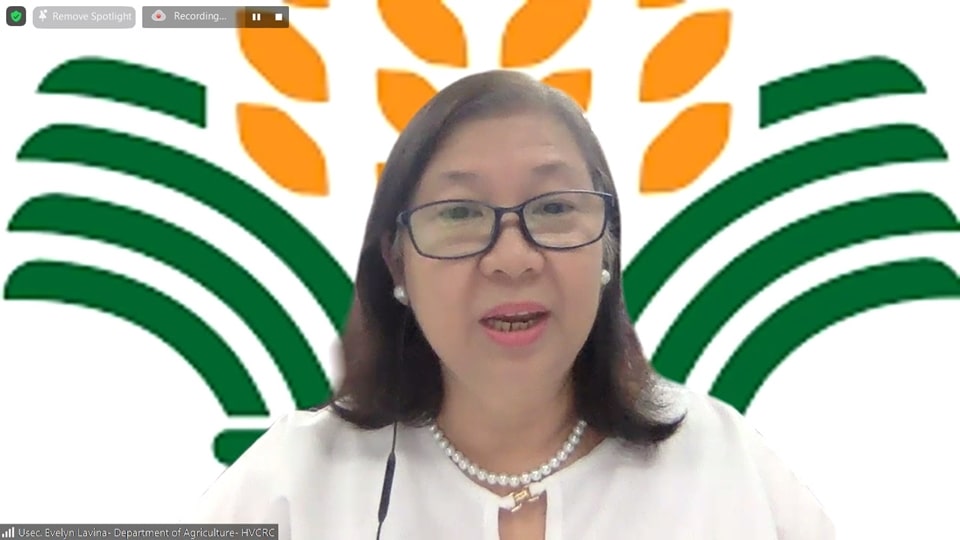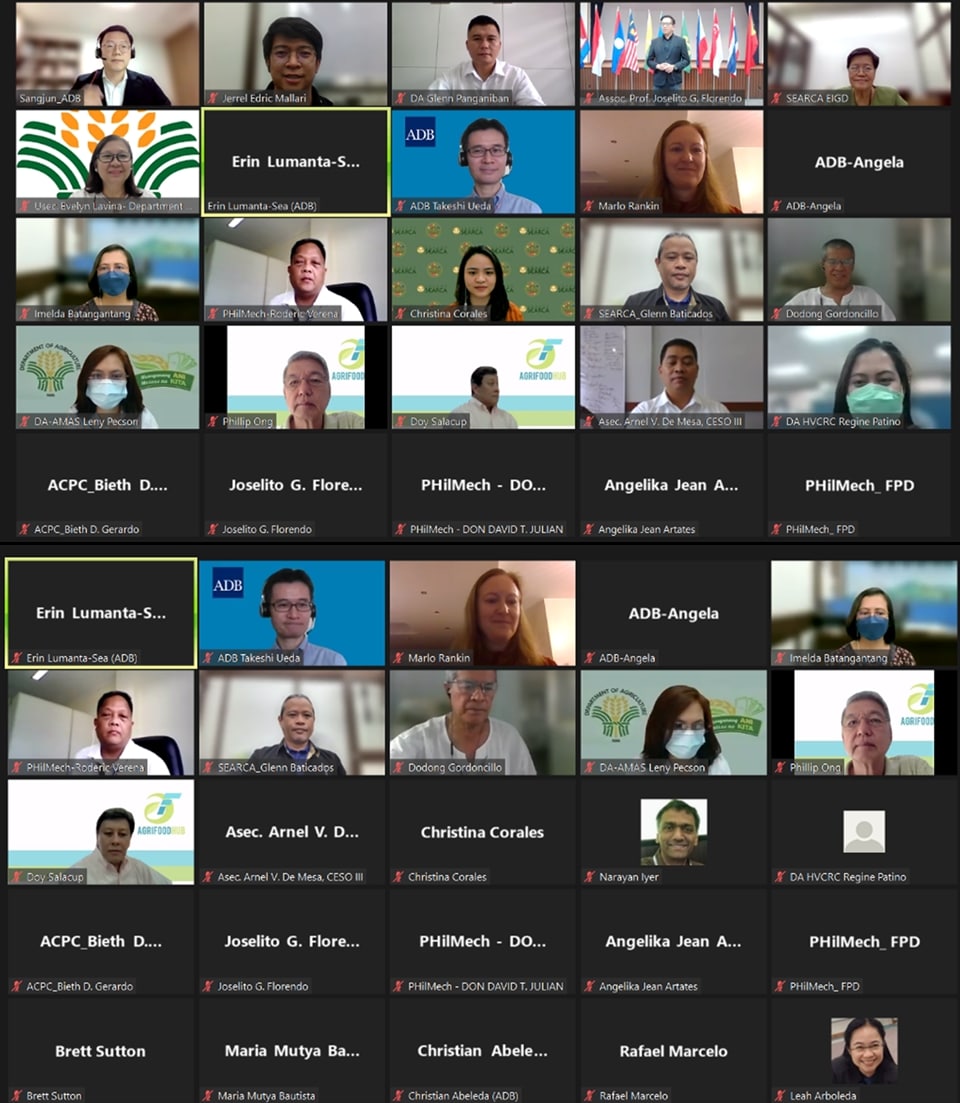The Southeast Asian Regional Center for Graduate Study and Research in Agriculture (SEARCA), together with SyCip Gorres Velayo & Company (SGV & Co.), conducted a virtual National Policy Forum for a recently completed Asian Development Bank (ADB)-funded project titled “Analysis of Fruit and Vegetable Value Chains in the Philippines.” Held on 21 February 2022, the forum focused on the presentation of results of the value chain analysis conducted on the three identified fruit and vegetables, namely, onion, tomato, and mango.
 Usec. Evelyn Laviña giving her welcome remarks
Usec. Evelyn Laviña giving her welcome remarks
Usec. Evelyn Laviña, Undersecretary for High Value Crops and Rural Credit of the Department of Agriculture (DA), Philippines, commenced the forum by emphasizing that the three crops – onion, tomato, and mango are part of Filipino’s staple food like rice and that it should be given significant focus and funding to be utilized efficiently and contribute to the growing economy of the country which will ultimately and positively impact the Filipino farming families.
 Dr. Takeshi Ueda of ADB (left) and Prof. Joselito Florendo of SEARCA (right) during their opening message
Dr. Takeshi Ueda of ADB (left) and Prof. Joselito Florendo of SEARCA (right) during their opening message
In his opening message, Dr. Takeshi Ueda, Principle Natural Resources and Agriculture Specialist, Southeast Asia Department of ADB, mentioned that the study is relevant to the direction of the DA which are agricultural diversification, industrialization, modernization, and commercialization, all of which are also related to the directions of ADB.
Mr. Joselito G. Florendo, SEARCA Deputy Director for Administration, also gave an opening message on behalf of Dr. Glenn B. Gregorio, SEARCA Director. He emphasized that SEARCA values research with focus on agricultural development as these projects greatly contribute to SEARCA’s thrust which is accelerating transformation through agricultural innovation (ATTAIN). Mr. Florendo highlighted that the pandemic enabled people to realize that the food supply is not only limited to production, and that the whole value chain process should also be given importance. He also pointed out that onion, tomato and mango, and other high-value crops should be upscaled and quality resources should be invested to ensure that the Philippines will have a future-proof agriculture sector.
 Dr. Marlo Rankin (left) and Dr. Flordeliza Lantican (right) presenting the results of the study
Dr. Marlo Rankin (left) and Dr. Flordeliza Lantican (right) presenting the results of the study
The results of the study were presented by Dr. Marlo Rankin, Agricultural Value Chain and Market Expert, and Dr. Flordeliza Lantican, Agricultural Value Chain and Market Specialist. The presentation focused on the post-harvest losses quantified along the value chain of the three commodities.
Specifically, the study revealed that mango produced in Iloilo and traded in Manila shows the highest post-harvest losses at 33.89%. Pangasinan-Manila route ranks second at 30.85% and Guimaras-Negros Occidental route as third at 19.02%. Moreover, a Guimaras mango corporation that follows GAP posts the lowest post-harvest losses at 11% in shipping fruits to Manila. Post-harvest losses in terms of volume and value indicate a significant reduction in marketable supply and income of key actors in the mango supply chain. Pangasinan registers the highest volume (31,581 t) and value (PhP 1.595 M) of post-harvest losses when mango is traded in Manila because it has higher mango production than other provinces. Iloilo, with the same destination, comes second with volume and value of post-harvest losses at 8,682 t and PhP 434 M, respectively.
Meanwhile, the total post-harvest loss of freshly harvested onions from the farm in Bongabon, Nueva Ecija to the final market in Divisoria, Manila is 45.06%. The estimated volume of post-harvest losses for red onion reaches 48,891 t and a value close to PhP 1.96 B. Post-harvest losses for the cold stored onion chain with the same route total to 63.90%, with estimated volume and value lost at 69,333 t and nearly PhP 4.01 B, respectively.
On the other hand, freshly harvested tomato produced in Nueva Ecija and traded in Manila incurs postharvest loss of 10.94%. The volume of post-harvest losses reaches 1,930 t with a value of PhP 47 M. The total post-harvest loss of freshly harvested tomato from the farm in Bukidnon, Northern Mindanao to the final market in Manila is much higher at 24.14% due to longer travel duration. This equates to an estimated volume of post-harvest losses of 41,125 t and value close to PhP 180 M.
Some of the key recommendations in reducing post-harvest losses for the three commodities includes investing in cold storage and packing facilities, providing of delivery vehicles to facilitate transport of goods, developing online trading/digital marketing in partnership with the private sector, increasing access to credit and insurance, and strengthening extension services at the grassroots level, among others.
A total of 32 participants composed of officials and staff from DA and its attached agencies, industry partners, and representatives and staff from ADB and from the private sector attended the national forum.
 Participants of the National Policy Forum
Participants of the National Policy Forum